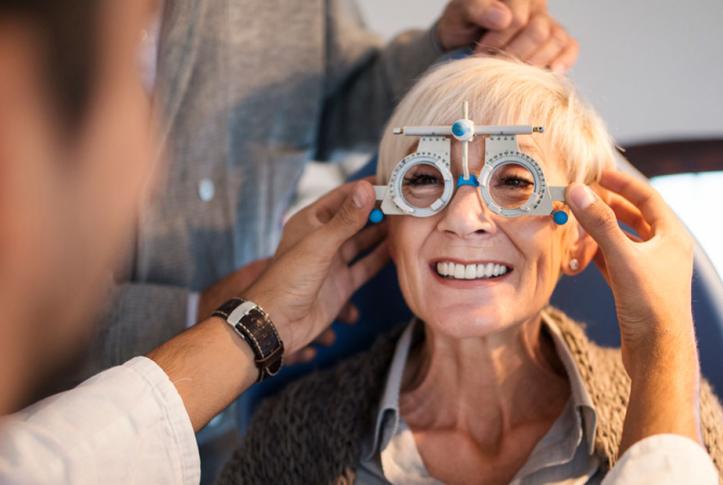The Issue
Older adults who ignore their dental, hearing, and vision health can experience a variety of negative outcomes, including diabetes, risk of falls, depression, and dementia, among many others. But many seniors don’t get the care they need to prevent these problems.
In part, this is because traditional Medicare includes no dental coverage and covers few vision or hearing services. Beneficiaries can purchase costly standalone coverage, but rates of uptake are low. Those in private Medicare Advantage (MA) plans may receive these services as supplemental benefits, but the generosity of that coverage varies. In a new Health Affairs study, researchers supported by the Commonwealth Fund assessed the current access, coverage, and cost challenges, as well as options for making Medicare’s benefit package more comprehensive.
What the Study Found
- Thirty-five percent of Medicare beneficiaries with high incomes (400% or more of the federal poverty level) had dental coverage, compared with 26 percent of those with low incomes (less than 100% of poverty). Overall, most Medicare beneficiaries got their dental coverage through MA plans. But low-income beneficiaries had coverage through Medicaid, and high-income beneficiaries were more likely to have standalone dental plans.
- Beneficiaries who had dental coverage were more likely to have had at least one dental visit in the past 12 months (61%) compared to those with no dental coverage (42%). Beneficiaries overall had substantial out-of-pocket dental spending.
- Sixty-seven percent of MA enrollees were covered for vision services, while just 4 percent of those in traditional Medicare reported having any vision coverage through standalone plans. Among those with vision coverage, total annual spending by people in traditional Medicare was higher ($415) than total spending by MA enrollees ($331).
- Coverage of hearing care was higher among low-income beneficiaries, with 41 percent covered (33% in Medicaid, 8% in MA plans) compared to 13 percent of high-income beneficiaries (all of whom received coverage through MA plans). Coverage for hearing aids and services is currently not available as a standalone plan.
The Big Picture
Medicare Advantage now covers more than a third of beneficiaries and is driving improvements in coverage for dental, vision, and hearing services. The Bipartisan Budget Act of 2018 gave MA plans the flexibility to offer more supplemental benefits. Access to services is still low, however, and need remains high. The drug-pricing bill passed by the House of Representatives in December 2019 includes an expansion of dental, vision, and hearing services for Medicare beneficiaries. In addition, Congress has directed the U.S. Food and Drug Administration to develop regulations for an over-the-counter hearing aid by the end of 2020.
The Bottom Line
Medicare Advantage is filling an important gap in dental, vision, and hearing coverage, particularly among low- and middle-income beneficiaries, although the generosity of these plans is limited.
